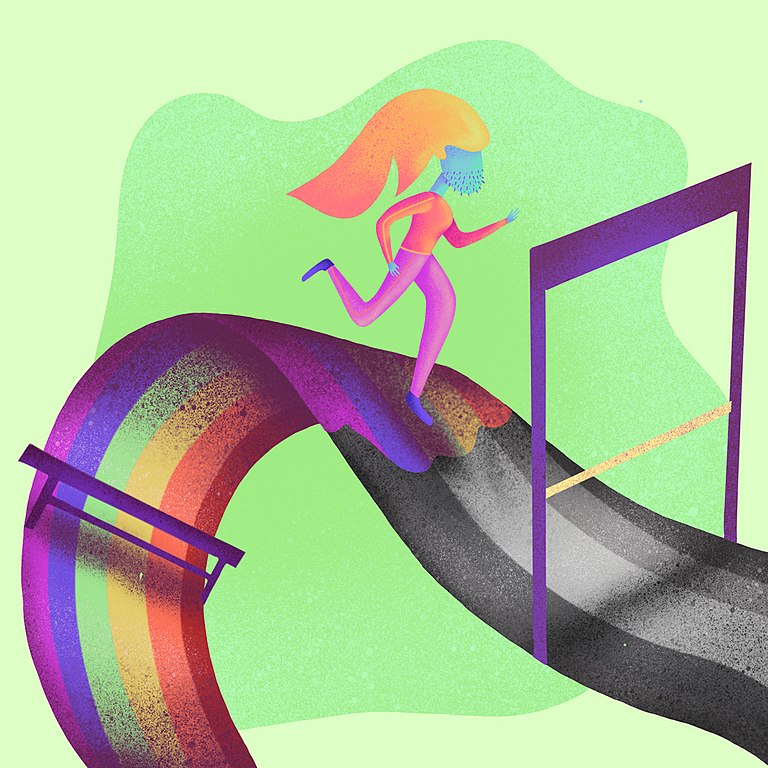108 Gender
Martha Lally; Suzanne Valentine-French; and Dinesh Ramoo
Sex refers to physical or physiological differences between males, females, and intersex persons, including both their primary and secondary sex characteristics. Gender, on the other hand, refers to social or cultural distinctions associated with a given sex. When babies are born, they are assigned a gender based on their biological sex, male babies are assigned as boys, female babies are assigned as girls, and intersex babies are usually relegated into one category or another. Scholars generally regard gender as a social construct, meaning that it does not exist naturally, but is instead a concept that is created by cultural and societal norms. From birth, children are socialized to conform to certain gender roles based on their biological sex and the gender to which they are assigned.
Since the term sex refers to biological or physical distinctions, characteristics of sex will not vary significantly between different human societies. For example, persons of the female sex, in general, regardless of culture, will eventually menstruate and develop breasts that can lactate. Characteristics of gender, on the other hand, may vary greatly between different societies. For example, in American culture, it is considered feminine to wear a dress or skirt. However, in many Middle Eastern, Asian, and African cultures, dresses or skirts (often referred to as sarongs, robes, or gowns) can be considered masculine. Similarly, the kilt worn by a Scottish male does not make him appear feminine in his culture.
Gender identity is a person’s sense of self as a member of a particular gender. Individuals who identify with a role that corresponds to the sex assigned to them at birth (for example, they were born with male sex characteristics, were assigned as a boy, and identify today as a boy or man) are cisgender. Those who identify with a role that is different from their biological sex (for example, they were born with male sex characteristics, were assigned as a boy, but identify today as a girl, woman, or some other gender altogether) are often referred to as transgender.
Transgender themes are found throughout many cultures. Chou Wang, Lan Caihe (Wolfram, 1986), Shan Gu, and Yu the Great, and Gun (Connor et al., 1998) are bisexual or transgender characters in Chinese mythology. Hindu mythology contains androgynous or hermaphroditic beings such as Ardhanarishwara (the lord who is half woman) who is an incarnation of Shiva. Shikhandi (शिखण्डी) is a transgender hero in the Indian epic Mahabharata who is instrumental in the victory of the protagonists.
The term transgender encompasses a wide range of possible identities, including agender, genderfluid, genderqueer (signifying gender experiences that do not fit into a binary concept), androgynous, bigender, pangender, ambigender, non-gendered, and intergender. Two-spirit is an umbrella term used by some Indigenous peoples in North Americans to describe gender-variant individuals in their communities. In Inuit traditions, the first two humans were Aakulujjuusi and Uumarnituq, who are both male. Their union impregnates Uumarnituq, who changes his biological sex in order to give birth. Sedna, who is often called a goddess, is in fact hermaphroditic and served by two-spirit shamans. Other myths depict Sedna as bisexual or as a lesbian living with a female partner (Penczak, 2003).
Transgender is independent of sexual orientation; transgender people may identify as heterosexual, homosexual, bisexual, pansexual, polysexual, asexual, or any other kind of sexuality, just like cisgender people do. It is difficult to determine the prevalence of transgender people in society; however, it is estimated that 700,000 individuals in the United States (0.3 percent) are transgender (Gates, 2011).

Some transgender individuals may alter their bodies through medical interventions, such as surgery and hormonal therapy, so that their physical being is better aligned with gender identity. Not all transgender individuals choose to alter their bodies or physically transition. Many will maintain their original anatomy, but may present themselves to society as a different gender, often by adopting the dress, hairstyle, mannerisms, or other characteristics typically assigned to a certain gender. It is important to note that people who cross-dress, or wear clothing that is traditionally assigned to the opposite gender, such as drag kings and drag queens, do not necessarily identify as transgender (though some do). People often confuse cross-dressing, which is the practice of dressing and acting in a style or manner traditionally associated with another sex, with being a transgender person. Cross-dressing is typically a form of self-expression, entertainment, or personal style, and not necessarily an expression about one’s gender identity.
Transgender discrimination: Transgender people are much more likely to experience harassment, bullying, and violence based on their gender identity; they also experience much higher rates of discrimination in housing, employment, healthcare, and education (National Center for Transgender Equality, 2015). Transgender people of colour face additional financial, social, and interpersonal challenges, in comparison to the transgender community as a whole, as a result of structural racism. Specifically, Black transgender people reported the highest level of discrimination among all transgender people of colour. As members of several intersecting minority groups, transgender people of colour, and transgender women of colour in particular, are especially vulnerable to employment discrimination, poor health outcomes, harassment, and violence. Consequently, they face even greater obstacles than white transgender people and cisgender members of their own race.

Gender roles: As we grow, we learn how to behave from those around us. In this socialization process, children are introduced to certain roles that are typically linked to their biological sex. The term gender role refers to society’s concept of how men and women are expected to act and behave. Gender roles are based on norms, or standards, created by society. In American culture, masculine roles have traditionally been associated with strength, aggression, and dominance, while feminine roles have traditionally been associated with passivity, nurturing, and subordination.
The drive to adhere to masculine and feminine gender roles continues throughout life. Men tend to outnumber women in professions such as law enforcement, the military, and politics; women tend to outnumber men in care-related occupations such as childcare, healthcare, and social work. These occupational roles are examples of typical American male and female behaviour, derived not from biology or genetics, but from our culture’s traditions. Adherence to these roles demonstrates fulfillment of social expectations, but not necessarily personal preference (Diamond, 2002).
Media Attributions
- Figure 7 10 © Leagbdg is licensed under a CC BY-SA (Attribution ShareAlike) license
- Figure 7 11 © Conner Baker is licensed under a Public Domain license

